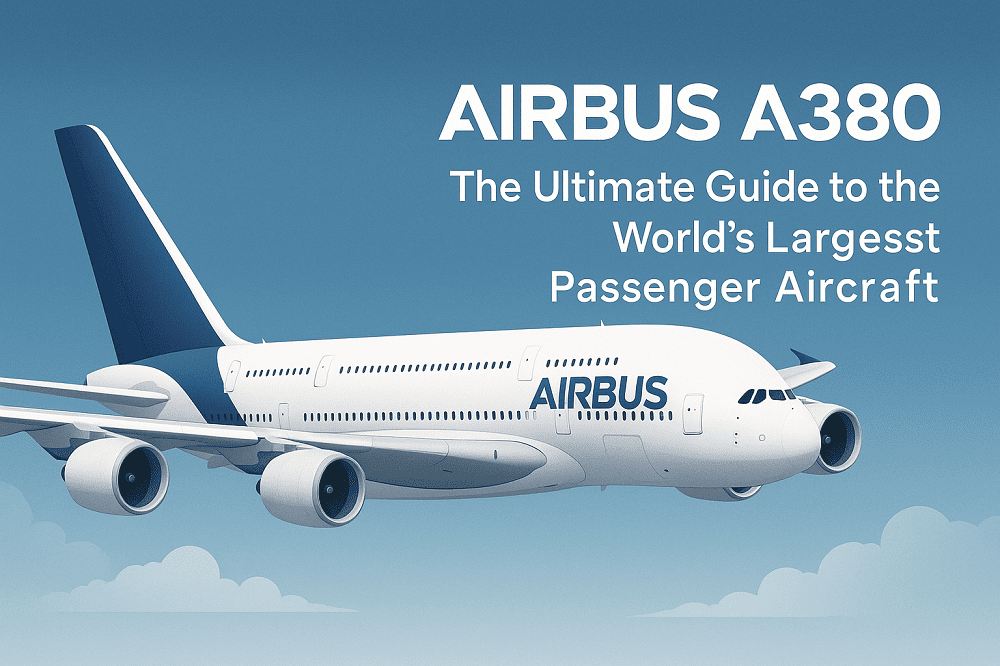Step aboard the magnificent Airbus A380, an engineering masterpiece that has redefined the boundaries of commercial aviation. This comprehensive guide explores every aspect of the world’s largest passenger aircraft, from its groundbreaking design to its operational impact on modern air travel.
The Airbus A380 stands as a testament to human innovation in aviation, claiming its throne as the world’s largest passenger aircraft. This double-decker giant has transformed air travel since its debut, delivering an unmatched flying experience that distinguishes it from conventional airliners.
Engineered to address growing air travel demands and airport congestion, the A380 seamlessly integrates cutting-edge technology with superior passenger comfort. Its impressive scale and innovative design have established it as an aviation industry icon, captivating both travelers and aviation enthusiasts.
Aircraft engine stand for lease
Overview of the Airbus A380
The A380’s engineering excellence is evident in its distinctive features. The full-length upper deck spans the entire fuselage, offering:
- 50% more floor space than competitors
- 60% increased headroom compared to Boeing 747-400
- Advanced carbon-fiber reinforced plastic construction (25% of structure)
- Reduced community noise levels
- Lower emissions per passenger
Key Specifications of the Airbus A380
| Specification | Detail |
|---|---|
| Length | 72.7 meters |
| Wingspan | 79.8 meters |
| Passenger Capacity | Up to 471 (typical configuration) |
| Cruising Speed | 0.85 Mach |
| Engine Type | Four Rolls-Royce Trent 900 |
The History and Development of the Airbus A380
The ‘superjumbo’ emerged as Airbus’s ambitious response to Boeing’s 747, marking a significant milestone in aviation history. This engineering marvel has revolutionized air travel, demonstrating Airbus’s dedication to innovation and pushing aircraft design boundaries.
The Journey from Concept to Reality
The A380’s development journey included several crucial milestones:
- Early 1990s – Initial concept development as A3XX
- December 2000 – Official project launch
- 2004 – First major assembly begins
- April 27, 2005 – Maiden flight in Toulouse, France
- October 2007 – Commercial service launch with Singapore Airlines
Challenges Faced During Production
The A380 program encountered significant obstacles, including:
- Complex wiring system installation (over 530 km of wires)
- Production delays and setbacks
- Development costs exceeding €25 billion
- Limited sales due to high operating costs
- Production cessation in December 2021
Airlines Operating the Airbus A380
The A380 continues to serve as a flagship aircraft for several prestigious carriers, with Emirates leading as the largest operator. These airlines leverage the aircraft’s unique capabilities to deliver exceptional long-haul services and premium travel experiences.
Engine Stand Trent 800 For Lease
Major Airlines and Their A380 Fleets
| Airline | Notable Features |
|---|---|
| Emirates | Largest fleet, onboard showers, lounge bar |
| Singapore Airlines | Launch customer, Suites Class |
| Qantas | Recently refurbished fleet, London-Sydney route |
| British Airways | Premium service focus |
Technical Aspects of the Airbus A380
The Airbus A380, the world’s largest passenger aircraft, represents a pinnacle of aviation engineering excellence. This remarkable aircraft features impressive technical specifications that distinguish it in the aviation industry.
| Technical Specification | Measurement |
|---|---|
| Length | 72.7 meters |
| Wingspan | 79.8 meters |
| Cruising Speed | 0.85 Mach |
| Passenger Capacity | 471 (typical three-class configuration) |
Engine Options and Performance
The A380’s powerplant options showcase the pinnacle of aviation propulsion technology:
- Rolls-Royce Trent 900 – delivers up to 374 kN (84,000 lbf) of thrust with enhanced fuel efficiency and reduced noise levels
- Engine Alliance GP7200 – provides 311-363 kN (70,000-81,500 lbf) of thrust, developed through a collaboration between General Electric and Pratt & Whitney
The A380’s performance capabilities include:
- Take-off distance within 3,000 meters on standard runways
- Maximum range of 14,800 km (8,000 nmi)
- Advanced aerodynamic design for optimal fuel efficiency
- Exceptional long-haul capabilities for global route operations
- Competitive cruising speed comparable to smaller aircraft
Engine Stand Trent 500/700 APS For Lease
Passenger Comfort and Experience
The A380 revolutionizes passenger comfort through its innovative design features and spacious cabin layout. The aircraft’s engineering prioritizes passenger well-being during long-haul flights, addressing common concerns such as fatigue and limited mobility.
Innovative Cabin Features
- Advanced LED lighting system simulating natural light cycles
- Enlarged overhead bins for improved storage capacity
- Superior noise reduction technology for a quieter cabin environment
- Premium amenities including onboard showers, private suites, and lounges (airline-dependent)
- Enhanced air circulation and cabin pressurization systems
- Wider seats and increased legroom across all classes
Environmental Impact and Sustainability
Despite its size, the A380 demonstrates significant achievements in environmental sustainability through advanced technologies and design features. Airbus’s commitment to ecological responsibility is evident in the continuous improvements made to enhance the aircraft’s environmental performance.
Fuel Efficiency and Emissions
The A380’s environmental profile includes several key features:
- Optimized fuel efficiency when operating at full capacity
- Advanced engine technology reducing CO2 emissions
- Compatibility with Sustainable Aviation Fuels (SAF)
- Reduced emissions per passenger on high-density routes
- Ongoing research into green technologies and hydrogen propulsion
The Future of the Airbus A380
While production ceased in 2021, the A380 maintains a significant presence in major airline fleets, particularly for high-demand routes. Airlines including Lufthansa, Etihad, British Airways, Qatar Airways, and Qantas continue to operate these aircraft, demonstrating their ongoing value in specific market segments despite the industry’s shift toward smaller, more fuel-efficient aircraft.
End of Production and Market Trends
The A380’s production conclusion stemmed from multiple market factors that challenged its commercial viability. The industry landscape shifted significantly, affecting the aircraft’s market position in several ways:
- Growing preference for point-to-point travel over hub-and-spoke models
- Increased demand for fuel-efficient aircraft options
- Limited market for high-density, long-haul routes
- Changing airline operational strategies
- Evolution of passenger travel patterns
Despite ending production, Airbus maintains robust support for the existing A380 fleet. This commitment mirrors their successful approach with the A300 program, ensuring operators can maximize their A380 investments through comprehensive service packages and technical support.
Potential Variants and Innovations
The A380’s technological legacy continues to influence modern aviation development through various innovations:
- Advanced materials integration in newer aircraft models
- Aerodynamic improvements applied to A350 and A330neo
- Enhanced cabin design concepts
- Pioneering engineering solutions
- Sustainable aviation technologies
Airbus is now focusing on future aviation technologies, including:
- Sustainable aviation fuel development
- Electric propulsion systems
- Hydrogen-powered aircraft research
- Advanced cabin interior concepts
- Environmental efficiency improvements
While direct A380 variants are unlikely, its innovative spirit lives on in Airbus’s commitment to developing more sustainable and efficient aircraft. The spacious design philosophy continues to influence modern cabin layouts, contributing to enhanced passenger experiences in future aircraft generations.
Read more:
- Airbus A320: Specifications, Features, and Seat Maps
- Airbus A340-300: Features, Specifications, and Performance
- Airbus A220: Features, Specs, and Benefits of the A220 Family
- Airbus Beluga: The Unique Transport Aircraft
- Airbus A340-600: Features, Specifications, and Performance
- Airbus A350: Features, Specs, and Innovations
- Airbus A319: Specifications, Seat Maps, and Features
- Airbus A321neo: Features, Specs, and Benefits
- Airbus A321: Specifications, Features, and Seat Maps

